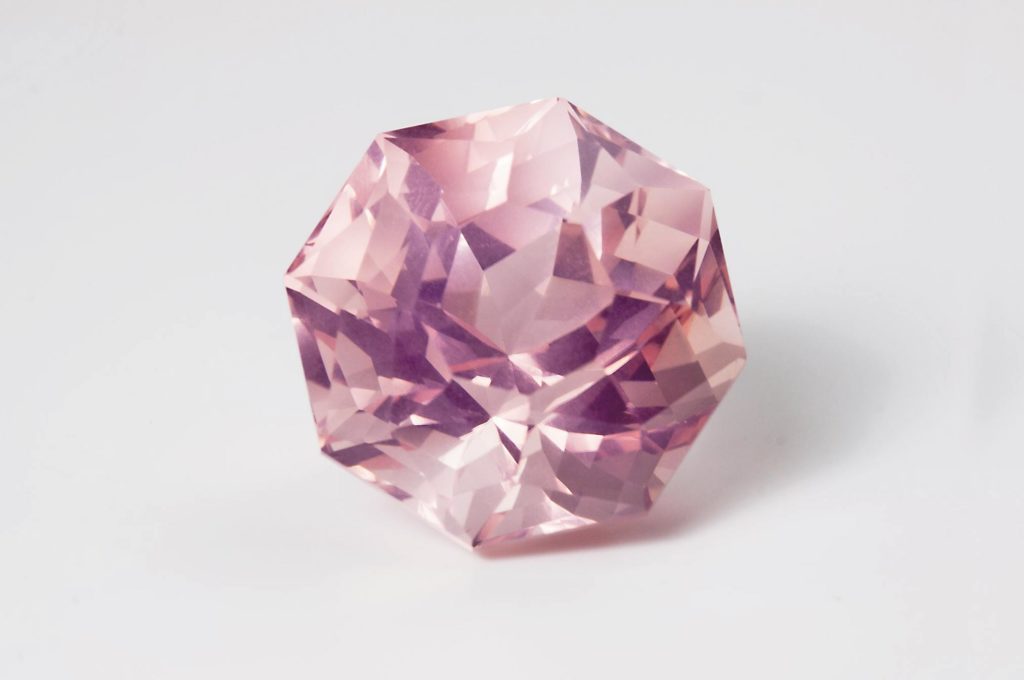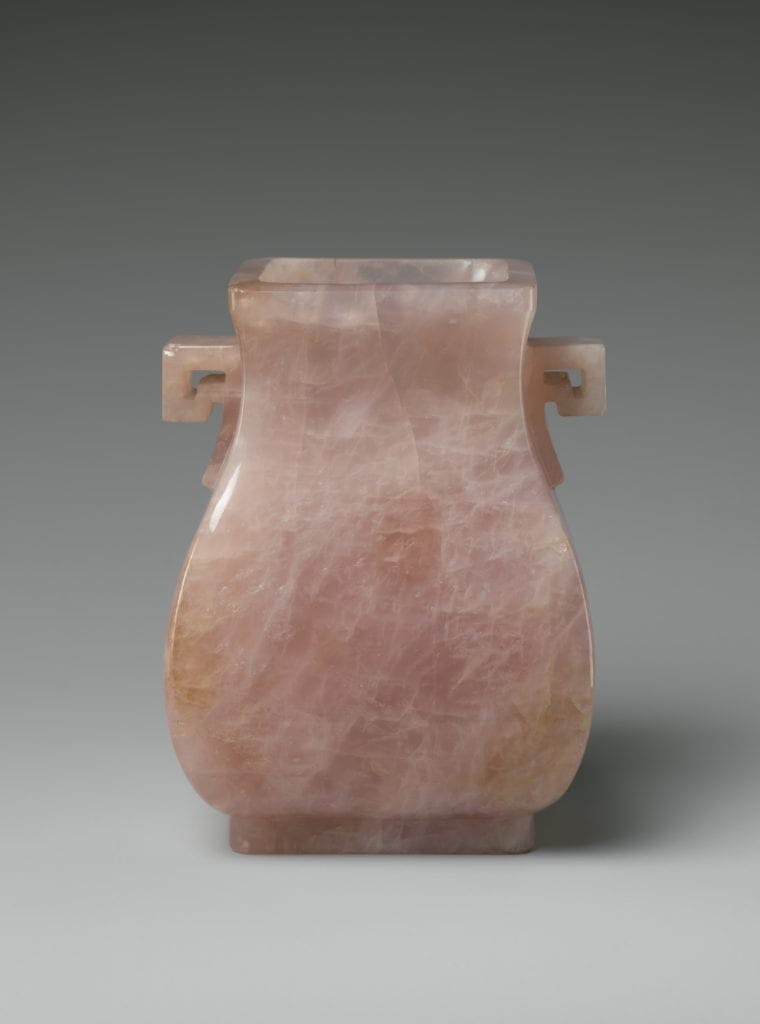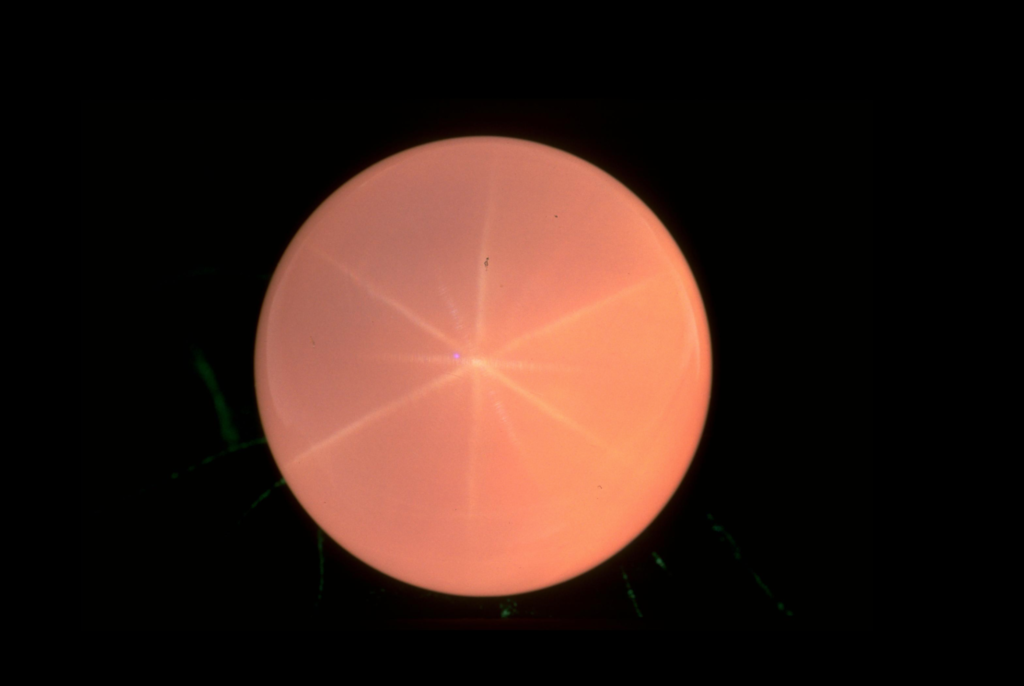Guide to Rose Quartz

The delicate pink variety of the mineral quartz, rose quartz makes a durable jewelry stone. Although commonly cabbed and carved, more transparent material can also be faceted.
Although quartz is one of the most common minerals on Earth, natural rose quartz is one of the rarer colored varieties of crystalline quartz. Still, it’s not an expensive gemstone. The most coveted colors are pure to purplish pink. These colors are hard to find with transparent clarity, instead showing a milky look.
Rose quartz commonly has light tones, so gems with medium tones may command higher prices. Larger gem sizes may also show more intense or saturated colors.
What is Rose Quartz?
Rose quartzes are quartzes that show a light to medium pink color. These gems receive their coloring from fibrous inclusions of a mineral similar to dumortierite. Sometimes, amethyst (the purple variety of quartz) may influence rose quartzes and give them a violet or purplish shade.
Is Rose Quartz Durable in Jewelry?
Rose quartz has a hardness of 7 and no cleavage, which make it an excellent choice for any type of jewelry use. This quartz variety has long been known as an opaque to translucent gem material. Indeed, it remains a popular choice for spheres, beads, decorative objects, and other types of carvings as well as cabochons. In the 1980s, transparent material was discovered in Madagascar. As a result, faceted rose quartzes entered the jewelry stone market.

Identifying Rose Quartz
Rose quartzes cut as gems seldom show transparency, especially above 20-30 carats. Large spheres will appear milky at best. Asterism, or the “star stone” effect, occurs rarely in quartz but is especially striking in rose quartzes. Since these gems may contain microscopic inclusions of rutile needles, cabs can sometimes show a six-rayed star when properly cut. Some cabs may display chatoyancy, a “cat’s eye” effect.
Rose quartz may also display another phenomenal effect, Tyndall scattering, which occurs very rarely in gemstones. Fine particles of the appropriate size suspended in a medium can make light appear blue. While dust in the air makes the daytime sky blue, inclusions in some rose quartzes can turn all or part of the gem blue, when light strikes at the proper angle. This rare effect appears relatively frequently in Madagascar material.
Rose quartz may share its color with some other very popular gemstones, but its specific gravity (2.651) and refractive index range (1.544-1.553) can help readily distinguish it from pink varieties of sapphire, spinel, tourmaline, and topaz, as well as the more rarely encountered kunzite. Be aware that rose quartz is sometimes sold under the misleading names of “American Ruby” or “Bohemian Ruby.” Of course, quartz and ruby (corundum) are distinct gem species.

What is “Pink Quartz”?
Although rose quartzes receive their pink color from inclusions, researchers have discovered another rarer type of pink quartz that gets its color through a different process. Natural irradiation causes color centers based on aluminum (Al) or phosphorus (P) to replace silicon (Si) in the quartz atom lattice. Although this quartz is still called “rose quartz,” some researchers have suggested naming it “pink quartz” to distinguish it from the more commonly encountered rose quartz, since it demonstrates some different physical and optical properties.
Pink quartzes occur in euhedral or regular, distinct crystal shapes with well-formed faces, whereas rose quartzes occur in anhedral or irregular, intergrown crystal shapes with less distinct faces. Pink quartz may also show greater transparency. Most significantly for jewelry use or display, pink quartzes have significant sensitivity to ultraviolet (UV) light. They can lose their color rapidly under exposure. Irradiation can restore the color. In contrast, the more common rose quartzes don’t have this sensitivity.
Is There Synthetic Rose Quartz?
Many varieties of quartz can be synthesized in labs. Rose quartz (more specifically, “pink quartz”) has been created by adding Al or P to synthetic quartz and subjecting the gems to gamma radiation. Rose quartz typically receives no treatments or enhancements. However, terminated crystals of rose quartz from Ganga Rosa, near Minas Gerais, Brazil, may turn strawberry red when irradiated. (Most other rose quartz will turn yellow if irradiated). These quartzes may be the euhedral “pink quartz” variety.
Where is Rose Quartz Found?
Rose quartz occurs in many locations across the globe. Brazil and Madagascar are the main sources of gem material. (Brazil also produces “pink quartz”). Other notable gem-quality sources include Afghanistan; India; Japan; Mozambique; Myanmar; Namibia; Russia; Sri Lanka and Maine, New York, and South Dakota in the United States.
Stone Sizes
Unlike most other colored crystalline quartz varieties, rose quartz doesn’t form large, facetable rough. Transparent gems rarely exceed 30 carats, although translucent specimens can weigh several pounds. The Smithsonian Institution holds a sphere of Brazilian star rose quartz that weighs 615 carats.
Caring for Rose Quartz Jewelry
Since rose quartzes often contains inclusions, refrain from cleaning these gems with mechanical systems. Instead, use warm water, detergent, and a soft brush. Reserve any jewelry made from the euhedral “pink quartz” variety for evening or occasional wear only. Store it in darkness, away from sunlight or other UV light sources, to preserve its color.
Source: International Gem Society
Image Credits:
Faceted rose quartz, 27.797 carats from Minas Gerais, Brazil, courtesy National Museum of Natural History, Smithsonian Institution
Rose quartz vase, China, Qing Dynasty, 18th century, 14.9 x 10.8 cm x 9.2 cm. Gift of Heber R. Bishop, 1902. Metropolitan Museum of Art, New York.
Rare double star rose quartz courtesy of National Museum of Natural History, Smithsonian Institution